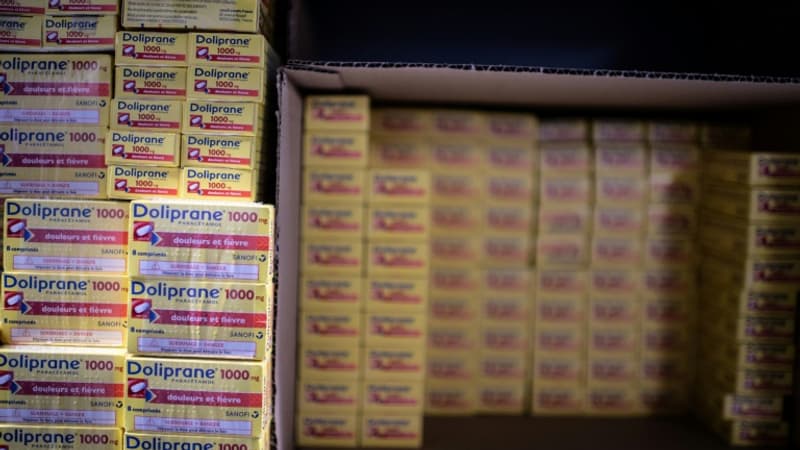Paracetamol supply difficulties continue this fall. Although a first alert had been launched, in July, the National Agency for the Safety of Medicines and Health Products (ANSM) renewed its recommendations on the use of analgesics.
Together with the College of General Medicine (CMG) and the pharmacists’ unions (FSPF and USPO), the agency calls on professionals to moderate prescriptions for patients who do not have an immediate utility to “thus allow patients who have a need immediately they can to benefit from it”.
But this phenomenon is not new. “There have been issues of tension over paracetamol for months and months,” recalls Philippe Besset, president of the Federation of Pharmaceutical Unions of France (FSPF). “We can’t get all the products delivered,” he explains.
To avoid a shortage at the national level, a quantitative quota had been established since last July. The objective is to limit deliveries to pharmacies to avoid localized shortages and guarantee homogeneity of supply in the territory. “The sale is also limited to two boxes per patient,” recalls the head of the FSPF.
The most affected pediatric forms
With these supply strains recently worsening, community pharmacies have asked the ANSM to reach out to the general public.
Although they first affected the market leader, Doliprane, manufactured by Sanofi, these tensions are now seen indiscriminately in all paracetamol-based medicines, including those from the UPSA laboratory (Efferalgan and Dafalgan).
In particular, the president of the FSPF warns about the lack of medicines for children. Because unlike those intended for adults for which pharmacists can offer alternatives (other brands or other forms), “there are only suppositories for children,” he insists. “For babies there is also paracetamol in syrup but it is not necessarily suitable, especially in case of vomiting,” explains the president of the FSPF.
However, it is not about talking about scarcity. “The production and deliveries of paracetamol have been adjusted to allow a safe and continuous supply throughout the territory”, can be read in the press release. “All teams at our production sites in Lisieux and Compiègne, as well as at our distribution sites, are mobilized to better meet the needs of patients,” Sanofi also assured us.
The increase in consumption in question
At the origin of these supply tensions is the significant increase in the consumption of paracetamol observed in recent years. A trend that is explained by the increase in infectious episodes and by the appearance of Covid, a virus whose symptoms can only be treated. However, paracetamol is the substance indicated to reduce body aches and lower fever.
If manufacturers have had two years of health crisis to adapt to this additional demand, other factors would reinforce these difficulties today. Stresses on raw materials, such as aluminum used for tablet packaging, and the production of certain excipients appear to be affecting deliveries.
Given these tensions, the paracetamol production relocation project announced in June 2020 by Emmanuel Macron therefore appears as a way to ensure its supply. Because if the active ingredient is properly packaged in France in the Sanofi and UPSA factories, the rest of its production chain moves to Asia and North America. In 2023, a factory of the pharmaceutical subcontractor Seqens, located in Roussillon (Isère), should produce paracetamol Made in France.
Source: BFM TV


